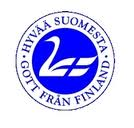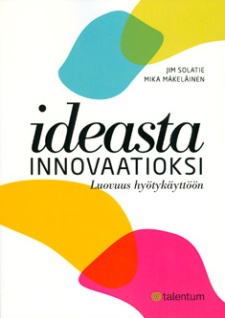Link to the news (sorry, only available in Finnish)
http://www.rannikkoseutu.fi/Uutiset/1194851176164/artikkeli/raisio+oyj+teki+ennatystuloksen.html
//Laura

Link to the news (sorry, only available in Finnish)
http://www.rannikkoseutu.fi/Uutiset/1194851176164/artikkeli/raisio+oyj+teki+ennatystuloksen.html
//Laura
Nalle – and the day tastes even better
Nalle is a familiar and safe product group to all families with children (since 1966). Nalle- flakes have been on the market for over 40 years and there are products for young children and babies and also for the whole family. Products for the children: Nalle individually packaged oat porridge (from 8 months and from 12 months, 4 flavors) Products for the whole family: Porridge flakes: oat, rye, whole grain, barley, rice, wheat. Also: semolina with different flavors, muesli, chocolate and vanilla oat drink
//Laura
I read the document about Design methods for developing services. It was very useful and I got a lot of new information from it. Like I have told I spent last year in France. During that time my classmates here in Finland have used a lot of different business tools. Time to time I hear people talking about for example Business Model Canvas and I didn’t know what it was. Now finally it became clear to me.
Double diamond process:
Divided in 4 phases:
1.Discover 2.Define 3.Develop 4.Deliver
1. First discover, gather information and inspiration. 2. Then dream and start to think wide and also outside the box. After all the ideas start to define what matters the most 3. Start to gather and design the best ideas and narrow it down and test them. Improve and design your ideas. 4. Designing the ideas and reaching the final product or service leads to your destiny. The key activities and objectives during this stage are: final testing, approval and launch, targets, evaluation and feedback loops. This final phase is to deliver the product.
1.Discover, gather inspiration and identify the users’ needs. Tools for phase
– User Journey Mapping
– User Diaries
– Service Safari
– User Shadowing
User Journey Map
– Point is to identify the different service lines and their problems. Nowadays there is many ways to hear from a product and buy it (different touch points).
– Some services can have different kind of users so it requires different journeys.
– The map might include pictures too.
User’s Diary
– Main thing is to collect information (interview) from the right people (better it is for longer period of time) and finding the needs.
– Get background information like name, occupation, family, age, location etc.
– The time of gathering information can vary a lot, from few hours to moths. It is a diary which can include pictures etc.
Service Safari
– Aim is to gather information about the service and what makes it a good experience.
– It is good to do in the beginning of design process.
– Helps to gain understanding in deeper level.
– Recording the experience in some way is very useful. For example written or visual record of the event or photographs, drawings or video.
Users Shadowing
– Gathering information of user needs. It is like spying the consumer.
– Identify the right people to shadow.
– Understand the different parts of a service like staging, interactions and touch points.
– Notice the barriers and opportunities for the service innovation.
2. Define and analyse the outputs of phase 1. Frame the design challenge. Tools for phase 2:
– User Personas
– Brainstorming
– Design Brief
User personas
– put information about users in understandable form
– focus on the needs
– then test your ideas and services and keep those needs in mind to give value for the users
– uses’ diaries, visual material, pictures videos etc.
Brainstorming
– it is a rich group discussion
– no more than 12 people and no longer than 1 hour but it can be useful to do it more than once
– develops ideas further
– creates shared understanding
Design Brief
– defines a problem or challenge and help to get over it
– usually it is a formal but understandable written document
– forms a core reference point for all stakeholders in the Develop and Deliver phases of the design process
– provides plan to developing phase
3. Develop. Prototyping, testing and improve ideas. Tools for phase 3:
– Service Blueprinting
– Experience Prototyping
– Business Model Canvas
Service blueprinting
– detailed visual representation of the total service over time
– looks similar than user’s journey map but it maps the future service, not the existing
– Some services might have a range of different offerings and require multiple blueprints
– it is a visual map or diagram identifying the key stages, touch points and other components that make up a service
Experience prototyping
– testing new ideas and prototype
– it can be acted out, photographed or video taped
– like role play, testing can take many hours
– gather feedback from potential users
– Communicate about the benefits and experiences that the service will deliver to stakeholders, including decision-makers, frontline staff, partners and users
Business Model Canvas
– find out whether parts of the service meet users’ needs and how they can be improved
– It can be a quick sketch to develop initial understanding of a business model or used in an in-depth exercise to fine tune particular aspects of a service.
– helps to translate service concepts into business processes.
– gather feedback from potential users
– The canvas is usually filled in as a collaborative
– exercise during a workshop, documenting the various aspects of a business through nine blocks
9 building blocks: Key partners, key activities, Value proposition, Customer relationship, Customer segments, Cost structure, Revenue Streams
4. Deliver. Tool for the phase 4:
Design scenario:
– creating stories through scenario of a future situation or service
– can be used in a number of different ways and at different times of the service design process
– to communicate outcomes to stakeholders, helping them understand and buy into the service vision
– best developed by small teams, drawing on a range of inputs and expertise to make them as solid as possible
– might be realized
– as a comic strip or a film, depending on the level of resources available
/Tiia Kares
Now we have to focus deeply one the most important brands of Raisio.
We decided to split it and to be prepared to the camp!
Here are your brands:
A short questionnaire about food brands (Responses)
Here are all the responses in Excel chart that we have got by now.
//Marianne
I interviewed face to face ten people. Persons who I interviewed were aged 26-36 and all of them have little children. Gender of male were 5 and female were 5. Nationality is Finnish. All of them had heard name of a company. For the question – If you have heard in what kind of situations? – Responses were:
All products and brands were familiar to the respondents. Interviewees wondered the huge number of brands and how all the products are so famous in Finland. All had bought the company’s products often and have always been satisfied with the quality.
//Laura
Principles of Marketing develops an innovative customer-value and customer-relationships framework that captures the essence of today’s marketing by explaining how to create value for customers in order to capture value from customers in return and building and managing strong, value-creating brands. It is filled with interesting examples and stories about real companies, such as Amazon, Google, ASOS and Lego and their marketing practices!
A short questionnaire about food brands
Here is a link for the survey I made. Me and Tiia will share it via Facebook! 🙂 Let’s see what kind of answers we’ll get..
//Marianne
Hi!
Here is my article what I have read. It is really good! This article makes you think about the new products and how to develop them.
http://www.smashingmagazine.com/2010/10/22/how-to-make-innovative-ideas-happen/
And today I borrowed a book which name is “Ideasta innovaatioksi – Luovuus hyötykäyttöön” by Jim Solatie and Mika Mäkeläinen.

I have start to read this and it looks good. Book is about how you can create a new idea and make this idea to be better than anyone elses. I recommend to all this book. I don’t know is this book available any other languages. Sorry!